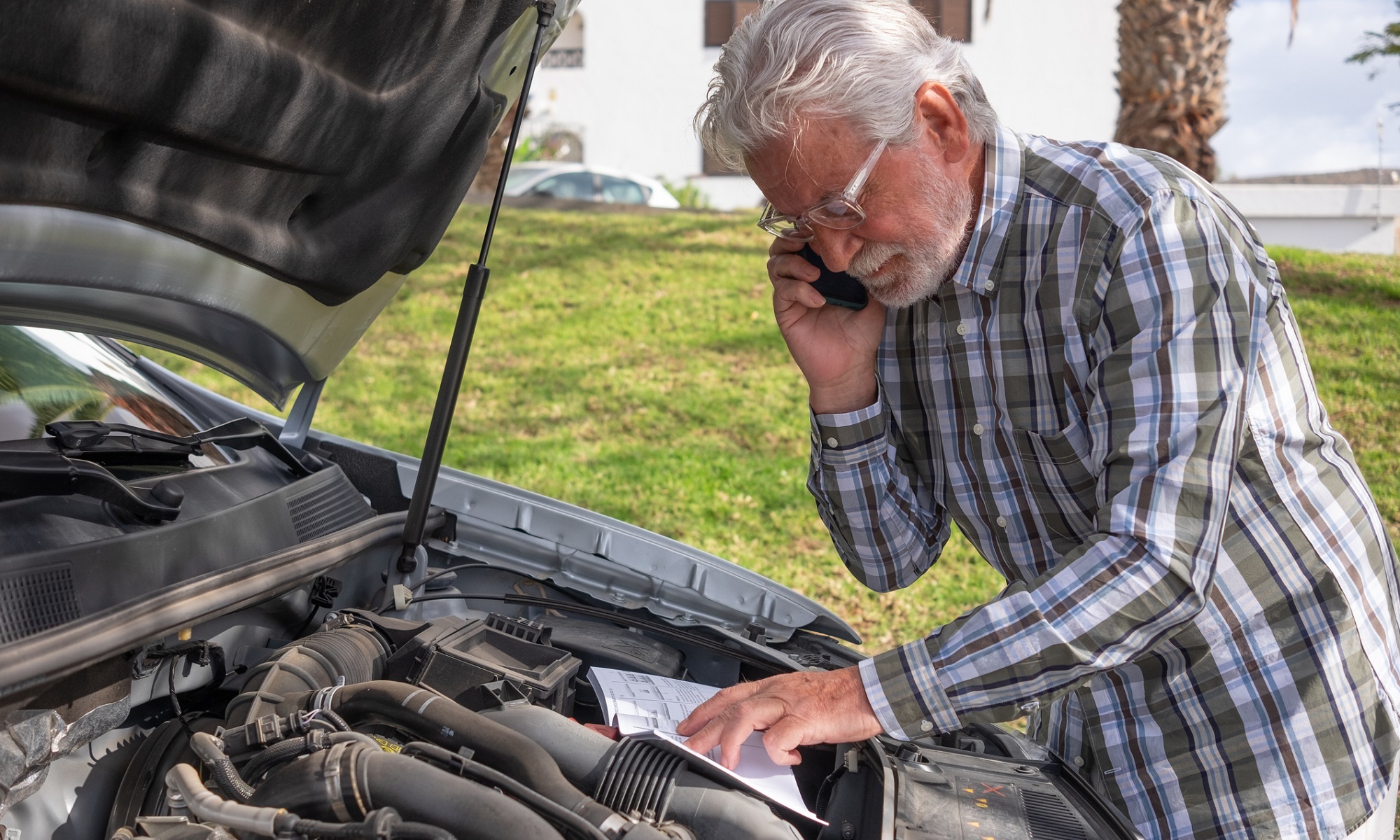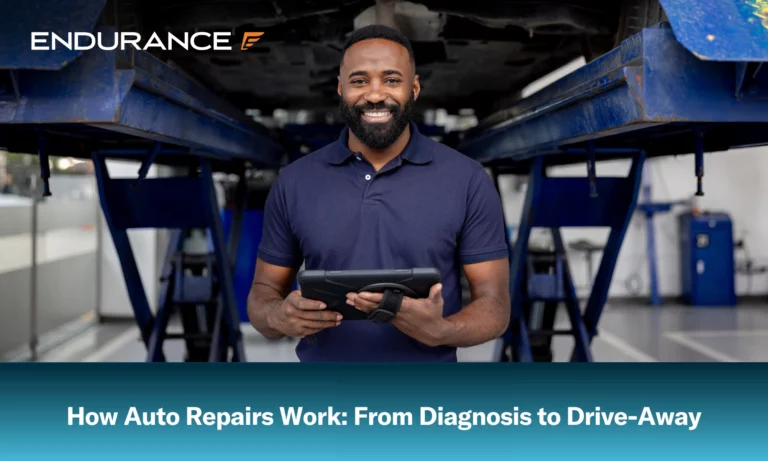What to Do When the Check Engine Light Comes On

You’re on your way to work listening to your favorite music or podcast to get you ready for the day ahead when it happens – the dreaded check engine light (CEL) comes on in your car. Don’t panic! That check engine light on is common, and if everything seems to be running smoothly, drive carefully, and you’ll still be able to make it to your shift. The good news is that when the check engine light comes on, it doesn’t necessarily mean you’ll need a costly engine replacement. It could be something as simple as a loose gas cap. However, it does indicate something isn’t right and shouldn’t be ignored.
What Does the Check Engine Light Mean?
The check engine light is part of the onboard diagnostics system (OBD), a computerized system assessing and regulating many of a vehicle’s primary functions. Several warning indicators, such as a battery symbol, a thermometer, or an oil lamp, can appear. When the check engine light comes on, it usually signifies a problem with the vehicle’s emissions system or engine.
The International Check Engine Symbol can look slightly different based on the make, model, and year of your vehicle and can even change based on the severity of the issue. The light may be yellow, orange, red, solid, or blinking and may or may not be accompanied by the word “check.” Older vehicles may have the text “Check Engine,” “Check Powertrain,” or a “Service Engine Soon” light.
Most Common Reasons Check Engine Lights Come On
While the check engine light is a warning that something is wrong, it can mean any number of things, ranging from minor, such as low brake fluid levels, to expensive, such as complete engine failure. However, although they can trigger a CEL to illuminate, overdue oil changes, brake concerns, low tire pressure, and a low battery have specialized warning indicators in many vehicles to help drivers identify and make those repairs quickly.
Because of the wide range of possible concerns, getting a diagnosis sooner rather than later is essential. However, there are a few tricks of the trade that may help determine the severity of the issue. For example, if the check engine light is solid yellow, the problem is likely not an emergency, and the repair shop visit can wait until your next day off. However, if the light is solid red, solid orange, or blinking yellow, the car’s engine needs immediate attention to prevent potentially catastrophic failure.
Here are a few common causes for a check engine light:
- Loose gas cap
- Electrical issues
- Broken O2 sensor
- Faulty catalytic converter
- Dirty engine air filter
Check Engine Light Is On, But the Car Runs Fine
Sometimes, a check engine light is accompanied by a change in the vehicle’s handling or performance. However, the vehicle often seems to be running perfectly, which makes a check engine light even more surprising. While this does happen, it isn’t wise to “wait and see” if the light goes off on its own. An undiagnosed problem can put unnecessary wear and tear on other parts of the vehicle, damaging expensive components and multiplying the issue. Not only that, but it can reduce overall fuel efficiency and release excess carbon monoxide and other pollutants into the environment. You should never leave the light unchecked.
What to Do When the Check Engine Light Comes On
Diagnosing the problem can be as simple as running a scan. When the check engine light comes on, the vehicle stores a “trouble code,” which can be accessed with a specialized code reader known as an OBDII Scanner. While this can give a generalized code to point drivers in the right direction of the problem, it doesn’t run complete diagnostics, so contacting an ASE Certified technician or repair shop is recommended for accurate diagnosis and repair. First, however, you can try a few steps before making your appointment.
Check for Other Warning Lights
Sometimes, an additional warning light flashing with the check engine light. Two lights do not necessarily mean two problems. Your vehicle’s OBD may give you a better indication of the repair needed without any extra steps. For example, if the oil light illuminates at the same time as the check engine light, changing your engine oil is an excellent place to start repairs and may resolve both lights.
Run a Scan
As mentioned, the problem triggering the check engine light stores a code in the OBD system. The code can be accessed by plugging an OBDII Scanner into the OBD port on the car’s computer. These engine scanners can be purchased at most local automotive parts stores. Alternatively, the automotive parts retailer can sometimes perform the scan as a complimentary service. These diagnostic test scanners can detect anything from issues with your spark plugs to a faulty mass airflow sensor or oxygen sensor – so they can be helpful!
Check the Gas Cap
One of the more common reasons for a check engine light is a loose or faulty gas cap. Gas caps are tightened and loosened frequently to refuel; eventually, they wear out. While a loose gas cap may be noticeable at the next fill-up, other symptoms can include a faint gas odor outside the fuel system or poor fuel economy. While replacing the gas cap can fix the problem, it takes a while to reset the computer, sometimes up to 100 miles or 20 cycles (turning the car on and then off again).
Restart the Vehicle
Occasionally, the check engine light will go off on its own if the problem resolves itself. For instance, if the driving conditions were poor and additional strain was put on the catalytic converter than usual, you may see a CEL. However, restarting the vehicle can trigger the OBD to reassess the car, and if there is no genuine issue, the light can disappear.
Take It to a Professional Mechanic
The best way to determine the cause of a check engine light is to take the vehicle to a trustworthy auto mechanic. While a scanner can help initiate a diagnosis, an experienced mechanic can run complete diagnostics, identify the simple or serious problem, and make the necessary repairs.
Auto Protection Plans Cover Mechanical Breakdowns
A check engine light is notorious for causing a moment of panic. However, an extended warranty or the right vehicle protection plan can give you peace of mind knowing that you won’t have to cover an expensive auto repair bill. With the comprehensive coverage of an Endurance auto protection plan, you can drive confidently, knowing you’re covered for mechanical breakdowns.
Endurance has unrivaled vehicle eligibility, including vehicle protection plans for high mileage vehicles, Canadian Grey Market vehicles, and cars with salvaged or rebuilt titles. Even vehicles used for rideshare and delivery services have coverage options.
With Endurance, you’ll be prepared for anything with 24/7 roadside assistance, trip interruption coverage, and rental car reimbursement. You’ll also be automatically eligible for Elite Benefits, which include tire replacement or repair, collision discounts, key fob replacement, and total loss protection. Call (800) 253-8203 for more information or request a FREE quote online. You can also find additional automotive resources on our blog, including articles to prepare you for your next road trip, price comparisons on cars, trucks and SUVs, and vehicle performance guides.













Since the age of 16, Keith has been immersed in the automotive industry, beginning his career by helping his dad fix vehicles at a young age. Keith now owns his own family-run, ASE Certified repair shop, A+ Autocare. At his shop, he focuses on building trusting relationships with his community through exceptional customer service. Read more about Keith.